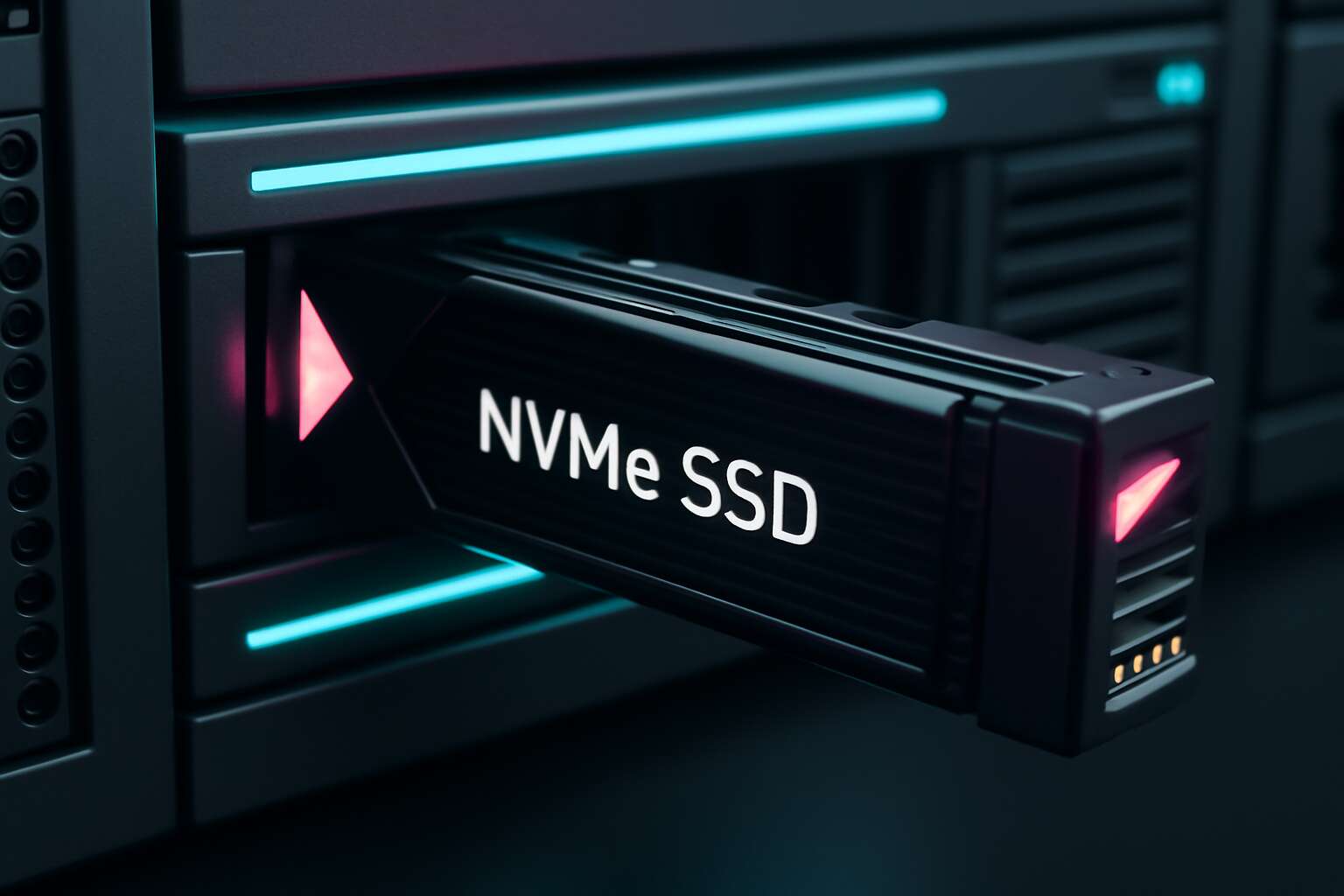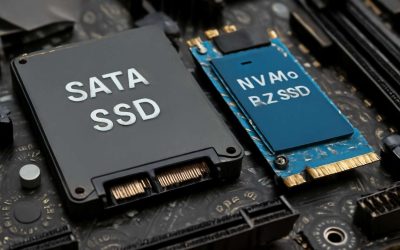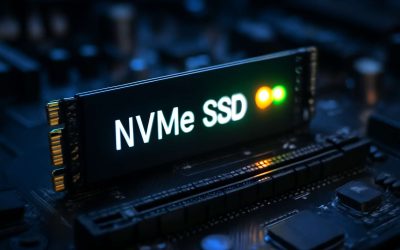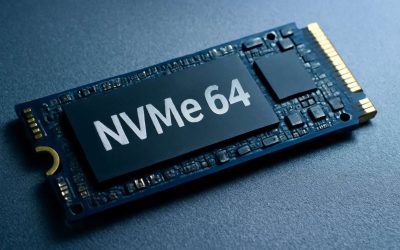Understanding NVMe SSDs and Hot Swappability
What are NVMe SSDs?
In the shimmering realm of modern data storage, NVMe SSDs stand as swift messengers, whispering data at lightning speed through the corridors of your computer. These solid-state drives, fueled by the Non-Volatile Memory Express protocol, unlock a universe of rapid responsiveness and unparalleled performance, transforming how we interact with our digital worlds. But a question often whispers in the shadows: are NVMe SSDs hot swappable? The answer isn’t as straightforward as flipping a switch, yet it holds the key to effortless upgrades and maintenance.
Understanding NVMe SSDs reveals their intricate design—compact, blazing fast, and connected directly to the motherboard via M.2 or PCIe slots. Their architecture is a marvel of engineering, optimized for speed but not always for the convenience of hot swappability. While some high-end enterprise models are engineered with hot swappable capabilities, most consumer NVMe SSDs require system shutdowns before removal or replacement. This distinction is crucial for those seeking seamless upgrades in high-performance environments.
How do NVMe SSDs differ from other SSDs and HDDs?
Understanding NVMe SSDs and their hot swappability reveals a lot about their role in modern data storage. Unlike traditional SSDs and HDDs, NVMe SSDs connect directly to the motherboard via M.2 or PCIe slots, bypassing the slower SATA interface. This direct connection allows for lightning-fast data transfer speeds but also introduces some limitations when it comes to hot swapping.
So, are NVMe SSDs hot swappable? In most cases, the answer is no—especially for consumer-grade models. While enterprise-grade NVMe SSDs are often designed with hot swappable features, they are typically installed in specialized server environments with dedicated hardware that supports hot swapping without risking data loss or hardware damage.
- Consumer NVMe SSDs generally require the system to be shut down before removal or replacement.
- High-end enterprise NVMe SSDs may be installed in hot swappable drive bays, enabling quick replacements without shutting down the system.
- The physical design of most NVMe drives and their slots doesn’t support hot swapping inherently, unlike traditional SATA drives.
Ultimately, whether an NVMe SSD can be hot swapped depends largely on the hardware setup and specific model. For most users, the process involves powering down the device—making hot swapping not a standard feature but an occasional possibility in specialized environments.
Definition of Hot Swappable Devices
Understanding NVMe SSDs and their hot swappability hinges on grasping what it means for a device to be hot swappable. A hot swappable device is one that can be removed or replaced without shutting down the system, minimizing downtime and boosting efficiency. This feature is common in many enterprise environments, but it’s not a given for all storage solutions.
When considering whether are NVMe SSDs hot swappable, it’s essential to recognize that most consumer-grade models are not designed for hot swapping. Their physical design and connection method—most often via M.2 or PCIe slots—make hot swapping inherently challenging. In contrast, enterprise-grade NVMe SSDs, installed in specialized hot swappable drive bays, are built to support this feature, allowing quick replacement without risking data loss or hardware damage.
Ultimately, whether an NVMe SSD is hot swappable depends on both the hardware configuration and the specific model. For most users, the answer is straightforward: are NVMe SSDs hot swappable? Usually, no. But in carefully designed data centers or high-end server environments, the answer can be different — yes, in certain circumstances!
Key features of hot swappable hardware
Understanding NVMe SSDs reveals a universe of speed and sophistication, but when it comes to hot swappability, the nuances become even more intriguing. These cutting-edge drives, renowned for their lightning-fast data transfer rates, are often perceived as delicate, yet their potential for seamless replacement hinges on more than just performance metrics. The key lies in their design and the environment in which they are deployed.
In enterprise settings, where uptime is sacred, hot swappable hardware embodies a rare elegance—allowing technicians to exchange drives without disrupting critical operations. The key features of hot swappable hardware include specialized drive bays, robust connectors, and resilient firmware that support immediate removal and replacement. For NVMe SSDs, this means having the right infrastructure—typically in dedicated server chassis—so that the drives can be maintained without halting the entire system.
So, are NVMe SSDs hot swappable? The answer often depends on their configuration. While many consumer-grade NVMe SSDs, connected via M.2 slots, are not designed for hot swapping, enterprise-grade models installed in hot swappable bays can be. This distinction underscores not only the importance of hardware compatibility but also the tailored environments required for these drives to truly shine in their hot swappable capacity.
Hardware and Compatibility Considerations
Design features of NVMe SSDs relevant to hot swapping
Within the intricate realm of hardware architecture, the design features of NVMe SSDs play a pivotal role in determining whether they are truly hot swappable. It’s a question that resonates deeply in the pursuit of seamless data management—are nvme ssds hot swappable? The answer hinges on specific compatibility considerations rooted in both the device’s physical design and the motherboard’s architecture.
Modern NVMe SSDs often incorporate specialized connectors and robust power management systems that facilitate hot swapping. These features are not incidental; they are meticulously engineered to ensure safety and integrity during operation. The key is to understand that not every NVMe SSD or motherboard supports this functionality without deliberate design foresight.
When assessing hardware considerations, look for:
- Hot-swap compatible slots—these are often distinguished by specific physical layouts or markings indicating support.
- Power delivery systems that prevent sudden surges during insertion or removal.
- Firmware that manages hot swap procedures, ensuring data integrity and system stability.
Compatibility extends beyond physical attributes, demanding that motherboards and enclosures explicitly support hot swap protocols for NVMe SSDs. Without these design features, attempting to hot swap can risk data loss or hardware damage—an unsettling thought in today’s data-driven world!
Motherboard and interface requirements
When it comes to the realm of NVMe SSDs, compatibility isn’t just a technical detail—it’s the gateway to seamless data management. The question of are NVMe SSDs hot swappable hinges on specific hardware configurations that marry design finesse with operational safety. Motherboards must feature specialized NVMe slots that support hot swapping, distinguished by clear markings or unique physical layouts that signal their readiness for such tasks.
Beyond the physical interface, the motherboard’s interface requirements are equally critical. Power delivery systems need to be robust enough to withstand the sudden insertion or removal of a drive without risking a surge that could damage delicate components. Firmware plays a silent but vital role, managing the hot swap process to ensure data integrity and system stability. Without these carefully engineered elements, attempting to hot swap NVMe SSDs could lead to catastrophic data loss or hardware failure.
In essence, the compatibility landscape for hot swapping NVMe SSDs is a nuanced one. It demands a synergy between the hardware’s physical design and the motherboard’s protocol support, making it a puzzle that only certain setups can confidently solve. For those pondering whether are NVMe SSDs hot swappable, understanding these intricate requirements is the key to unlocking true plug-and-play convenience in high-performance data environments.
Enclosures and drive bays for hot-swappable NVMe SSDs
Envision a fortress of data, where each NVMe SSD acts as a vital sentinel guarding your digital treasures. The hardware and compatibility considerations for hot-swappable NVMe SSDs are the silent architects of this fortress—ensuring swift, safe exchanges without jeopardizing your precious information. The enclosures that house these speedy drives must be meticulously designed to accommodate effortless insertion and removal, often featuring specialized drive bays that signal readiness for hot swapping.
In the realm of high-performance data management, the design of enclosures and drive bays is no trivial matter. They must not only facilitate physical access but also integrate seamlessly with the motherboard’s protocol support. Many enclosures boast features like:
- Locking mechanisms to prevent accidental disconnection
- Clear visual cues indicating hot-swap capability
- Robust shielding to protect against electrostatic discharge
Ultimately, compatibility hinges on a symphony of elements—durable enclosures, precise drive bay architecture, and motherboard support that recognizes and safely manages NVMe SSD hot swapping. In this intricate dance of hardware harmony, only the most thoughtfully engineered setups achieve the coveted status of truly hot-swappable NVMe SSDs, transforming complex data environments into a ballet of efficiency and resilience.
System compatibility and BIOS/UEFI settings
Ensuring your system recognizes and safely handles NVMe SSDs during hot swapping hinges on meticulous hardware and compatibility considerations. It’s not just about plugging in a drive; it’s about orchestrating a symphony where every component plays its part flawlessly. Compatibility between the NVMe SSD, motherboard, and supporting interfaces is paramount—without it, the entire hot-swappable process risks turning into a digital disaster.
Modern motherboards often feature specific BIOS or UEFI settings designed to facilitate hot swapping—these are critical to enable. Accessing the firmware and enabling hot swap or related PCIe configurations ensures the system can detect and safely manage the removal or insertion of NVMe SSDs without data corruption. Many systems also require that the motherboard supports NVMe protocol extensions for hot swapping, making it crucial to verify specifications before attempting to switch drives on the fly.
In some cases, the hardware architecture demands that you follow a particular sequence—such as powering down the drive or system—before physically removing or installing an NVMe SSD. For those seeking true hot-swappable capabilities, the integration of specialized drive bays and locking mechanisms provides peace of mind, preventing accidental disconnections that could jeopardize data integrity. In essence, the compatibility of hardware components and the correct BIOS/UEFI settings form the backbone of whether are NVMe SSDs hot swappable or not, shaping a seamless experience in high-performance data environments.
Are NVMe SSDs Generally Hot Swappable?
Manufacturer specifications and guidelines
When considering the question, “are NVMe SSDs hot swappable,” the answer is nuanced, rooted deeply in both design philosophy and manufacturer specifications. Unlike traditional SATA drives, NVMe SSDs are engineered to leverage high-speed PCIe interfaces, which introduce unique considerations for hot swapping. Most NVMe SSDs are not inherently designed to be hot swappable, primarily due to their delicate architecture and the need for precise power management during removal or insertion.
Manufacturers often specify whether their NVMe drives support hot swapping, emphasizing that improper handling can risk data corruption or hardware damage. Many high-end enterprise models may feature this capability, but consumer-grade NVMe SSDs generally do not. It’s essential to consult the specifications before attempting to swap drives in a live system. For those systems that do support hot swapping, specific hardware components and BIOS/UEFI settings must be correctly configured to ensure safety and functionality. Thus, while the allure of instant drive replacement is tempting, it remains largely dependent on the device’s design and manufacturer guidelines.
Common use cases in enterprise and data centers
Surprisingly, only a handful of NVMe SSDs are truly hot swappable—despite their reputation as the speed demons of storage. In enterprise and data center environments, where uptime is king, the question of “are NVMe SSDs hot swappable?” isn’t just academic; it’s a critical business concern. Most high-end enterprise models do support hot swapping, enabling technicians to swap drives without shutting down the entire system—talk about minimizing downtime! However, for the average consumer, the answer is less glamorous: no, most NVMe SSDs aren’t hot swappable out of the box.
In data centers, drive bays and specialized hardware facilitate seamless drive exchanges. These setups often include robust hardware components and BIOS/UEFI configurations designed specifically for hot swapping. Meanwhile, consumer-grade NVMe SSDs—those sleek little chips sitting inside your gaming rig or desktop—are usually not compatible with hot swapping, primarily because their architecture isn’t built for it. So, if you’re pondering whether are NVMe SSDs hot swappable, it’s essential to check manufacturer specifications—unless you’re a seasoned hardware wizard, proceed with caution!
Limitations and risks of hot swapping NVMe SSDs
The allure of NVMe SSDs lies in their blistering speed and sleek architecture, yet when it comes to hot swapping, many are left asking—are NVMe SSDs hot swappable? The truth is, most consumer-grade NVMe SSDs are not designed with hot swapping in mind. Their architecture prioritizes performance and compactness over the robustness needed for seamless, on-the-fly removal. This limitation isn’t just a technical inconvenience; it’s a potential pathway to data corruption or hardware damage if mishandled.
In enterprise environments, however, the landscape is different. Here, systems are engineered with dedicated hardware that supports hot swapping, often including specialized drive bays and BIOS/UEFI configurations. For those considering whether are NVMe SSDs hot swappable, the key lies in understanding the hardware’s design and manufacturer specifications. Without these safeguards, attempting to hot swap consumer NVMe SSDs can lead to unforeseen risks, including data loss or system instability.
Differences in hot swappability among NVMe SSD models
In the labyrinthine world of high-performance storage, the question of whether are NVMe SSDs hot swappable remains a pivotal point of intrigue. The answer isn’t as straightforward as one might hope. While the allure of instant, on-the-fly drive replacement is enticing, the reality is nuanced. Most consumer-grade NVMe SSDs, meticulously engineered for speed and minimal form factor, lack the inherent design features that facilitate hot swapping. Their architecture, optimized for performance, often neglects the necessary robustness and system integration required for safe, seamless removal during operation.
However, in specialized enterprise environments, the narrative shifts dramatically. Here, systems are constructed with dedicated hardware—advanced drive bays and BIOS configurations—that support hot swapping. For those pondering whether are NVMe SSDs hot swappable, it’s essential to discern the specific hardware’s design and manufacturer specifications. Without these critical safeguards, attempting to hot swap consumer NVMe SSDs risks data corruption, hardware damage, or system instability. The key lies in understanding that not all NVMe SSDs are born equal in this regard, and their hot swappability hinges on the ecosystem they inhabit.
Best Practices for Hot Swapping NVMe SSDs
Proper procedures for hot swapping
Hot swapping NVMe SSDs can seem like a delicate dance, requiring both precision and respect for the hardware’s integrity. Proper procedures are essential to ensure data safety and device longevity. First, always verify that your system supports hot swapping—this is a fundamental step in determining whether you can confidently ask, are NVMe SSDs hot swappable? Once confirmed, power down the system to prevent accidental damage, then disconnect the power supply before removing the NVMe SSD.
In environments where hot swapping is routine, such as data centers or enterprise settings, following a structured sequence minimizes risks.
- Use anti-static wristbands to prevent electrostatic discharge.
- Handle the NVMe SSD by its edges, avoiding contact with the circuitry.
- Insert or remove the drive smoothly to prevent mechanical stress.
If your system supports hot swapping, ensure that BIOS or UEFI settings are configured correctly to recognize changes dynamically. These steps don’t just protect your hardware—they preserve the seamless flow of data that keeps modern digital life thriving.
Data safety and backup precautions
When it comes to maintaining a robust and agile digital infrastructure, understanding the best practices for hot swapping NVMe SSDs is paramount. Data safety should never be compromised, especially in environments where uptime is critical. Before attempting to hot swap, always verify whether your system supports this feature; not all configurations are created equal. Ensuring regular backups before any hardware manipulation acts as an insurance policy against unexpected data loss. It’s wise to maintain a meticulous record of your drive’s status and any recent changes.
In high-stakes settings like data centers, where downtime translates into significant costs, adhering to a structured protocol is essential. Employing anti-static wristbands and handling drives by their edges minimizes electrostatic discharge and mechanical stress—both of which could jeopardize your SSD’s lifespan. When you are ready to swap, remember to use smooth, deliberate motions, avoiding abrupt pulls or pushes. These small precautions contribute toward preserving the integrity of your data and hardware alike.
For those wondering are NVMe SSDs hot swappable, the answer hinges on your system’s compatibility. If supported, following manufacturer specifications and guidelines can prevent many common pitfalls. Some systems may require BIOS or UEFI adjustments to recognize hot-swapped drives dynamically. {In these cases,} a simple ordered process can make all the difference, such as:
- Power down the system or disable hot swap mode if applicable.
- Disconnect the power supply to prevent accidental electrical shorts.
- Carefully remove or insert the NVMe SSD, ensuring gentle handling.
Implementing these best practices helps safeguard your data and extend the longevity of your NVMe SSDs, especially when hot swapping becomes a routine part of your workflow. It’s not just about the mechanics; it’s about fostering a culture of respect for the hardware that keeps modern enterprise and personal systems running smoothly.
Tools and accessories to facilitate hot swapping
When it comes to maintaining a seamless and resilient digital environment, the right tools and accessories can make all the difference—especially for those who regularly hot swap NVMe SSDs. Investing in high-quality anti-static wristbands, ESD-safe gloves, and precision screwdrivers can protect sensitive components and simplify the process. A static-free work surface ensures that electrostatic discharge won’t compromise your drive’s integrity, which is paramount during delicate handling.
For efficient hot swapping, consider using dedicated enclosures designed explicitly for NVMe SSDs. These enclosures often feature built-in cooling and easy-access ports, streamlining the hardware exchange process. Additionally, some systems benefit from specialized drive bays equipped with quick-release mechanisms—these reduce the risk of accidental damage and accelerate workflow. If you’re unsure whether your setup supports hot swapping, consulting the manufacturer’s guidelines is a smart move. Remember, employing the right accessories and adhering to best practices can make the difference between a smooth swap and a costly error.
Troubleshooting common issues
In the intricate ballet of modern data management, the question of whether are NVMe SSDs hot swappable remains a pivotal consideration for IT professionals and enthusiasts alike. When executed with precision, hot swapping not only preserves operational continuity but also minimizes downtime—a factor critical in the high-stakes environment of enterprise storage. However, the challenge lies in understanding the nuanced interplay between hardware design, system configuration, and the human element, all of which influence the success or failure of a hot swap.
Achieving a seamless hot swap hinges on meticulous adherence to best practices. Before initiating any procedure, verifying system compatibility through manufacturer specifications is imperative. Ensure that your motherboard and interface support hot swapping—otherwise, the risk of data corruption or hardware damage escalates significantly. Employing tools such as anti-static wristbands and ESD-safe gloves isn’t merely a precaution; it’s a safeguard against insidious electrostatic discharge that can silently compromise sensitive NVMe SSD components.
When it comes to troubleshooting common issues encountered during hot swapping, patience and methodical inspection often illuminate the root cause. For example, if a drive isn’t recognized after insertion, one might consider verifying BIOS or UEFI settings to confirm hot swap support is enabled. Additionally, inspecting the enclosure or drive bay for proper connection and ensuring no physical damage has occurred can prevent recurrent problems.
- Confirm that your system’s firmware and drivers are up-to-date, as outdated software can hinder recognition of NVMe SSDs.
- Check for thermal issues—overheating can cause drives to become unresponsive during or after hot swapping.
- Review the storage management logs for error messages that provide clues to hardware or configuration conflicts, which often plague hot swap operations.
Ultimately, mastering the art of hot swapping NVMe SSDs demands a blend of technological understanding and acute attention to detail. Every step, from system checks to physical handling, must be executed with deliberate care. Only then can the full potential of NVMe SSDS—those marvels of speed and efficiency—be harnessed without risking the delicate balance of your digital ecosystem.
Future Trends and Innovations
Emerging technologies in NVMe SSDs and hot swapping
As technology hurtles forward, the future of NVMe SSDs is poised for revolutionary innovations that could redefine hot swapping. Emerging technologies such as PCIe 5.0 and beyond promise staggering increases in data transfer speeds, making hot swappable NVMe SSDs more efficient and reliable than ever before. These advancements aren’t just about speed—they’re about creating a seamless, almost intuitive interface for data management that adapts to the increasing demands of enterprise and cloud storage environments.
Moreover, the integration of intelligent thermal management and self-healing capabilities into NVMe SSDs could drastically reduce downtime and prevent data loss during hot swapping procedures. As these drives become smarter, the line between hardware and software continues to blur, fostering an ecosystem where hot swapping isn’t merely a feature but an intrinsic part of future data infrastructure. With such innovations, understanding whether are nvme ssds hot swappable will become even more critical, ensuring users can harness these technologies safely and efficiently.
Industry standards and certifications
As the landscape of data storage continues to evolve at a breathtaking pace, the industry’s focus on establishing robust standards and certifications becomes more critical than ever. Future trends in NVMe SSDs are not only about blistering speeds but also about ensuring seamless interoperability and safety during hot swapping. Industry standards such as the PCIe Alliance’s evolving specifications and certifications aim to guarantee that NVMe SSDs can be confidently hot-swapped across a diverse array of systems and enclosures.
These standards serve as the backbone for reliable hot swapping, making it easier for users to upgrade or replace drives without risking data integrity. As technology moves forward, expect to see more comprehensive certifications that address thermal management, data security, and compatibility—key factors that will influence whether NVMe SSDs are hot swappable in future setups. The integration of these standards promises a future where hot swapping is no longer a delicate operation but an effortless, almost intuitive process, aligning with the rising demands of enterprise and cloud environments.
Industry players are also pioneering innovations such as modular drive architectures and adaptive interfaces, which will further enhance the safety and efficiency of hot swapping. For example, emerging NVMe SSDs are likely to feature built-in self-diagnostic tools and advanced thermal sensors—elements that will ensure data remains protected during every hot swap. As these advancements become industry benchmarks, understanding whether are NVMe SSDs hot swappable will be crucial for organizations aiming to build resilient, future-proof data infrastructures.
Impact on enterprise storage solutions
As enterprise storage solutions continue their relentless march toward greater efficiency, the horizon is shimmering with innovative trends poised to redefine hot swapping norms. Future NVMe SSDs will be more than just high-speed data conduits; they will embody intelligence and adaptability, ensuring seamless integration into complex systems. The question — are NVMe SSDs hot swappable? — is no longer just academic but fundamental to future-proofing infrastructure.
Emerging technologies aim to embed self-diagnostic tools and thermal sensors directly into NVMe SSDs. These advancements will allow drives to monitor their health during hot swaps, reducing downtime and safeguarding data integrity. Such innovations foster an ecosystem where hot swapping becomes a matter of routine, rather than a delicate maneuver. The evolution of modular drive architectures and adaptive interfaces will further streamline this process, offering a symphony of safety and speed.
Industry players are also exploring new standards that incorporate adaptive power management and advanced security protocols. These standards will underpin the development of NVMe SSDs capable of being confidently hot-swapped across diverse environments—from bustling data centers to enterprise cloud platforms. The integration of intelligent features will make the answer to the perennial question—are NVMe SSDs hot swappable?—a resounding yes, with a future that is both resilient and remarkably effortless.




0 Comments